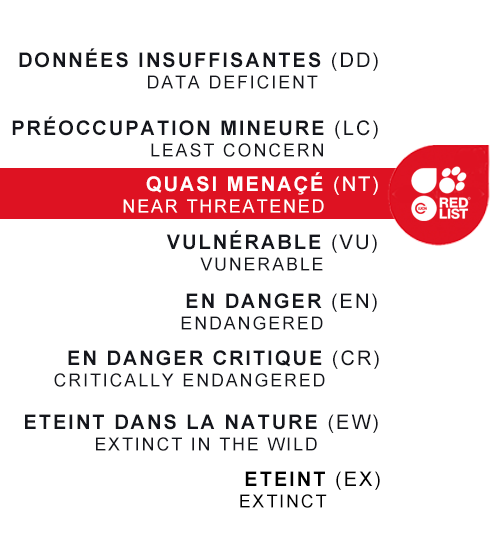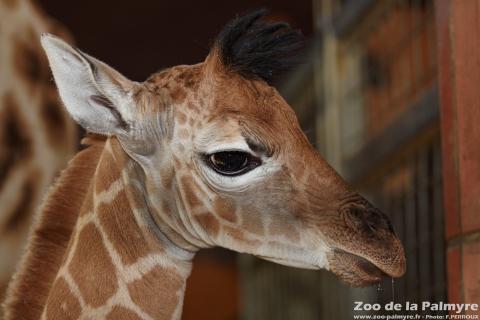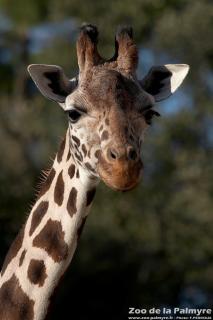Giraffe

Giraffe

-
Class
Mammalia -
Order
Artiodactyla -
Familly
Giraffidae
-
 4.5–6m
4.5–6m -
 ♂ 1.8 tonnes, ♀ 450kg to 1.1 tonnes
♂ 1.8 tonnes, ♀ 450kg to 1.1 tonnes -
 15 months
15 months -
 1
1 -
 10–15 years (up to 30 in zoos)
10–15 years (up to 30 in zoos)
-
Diet
folivorous (leaves, buds) -
Habitat
(acacia) savannah -
Range
Africa (from the southern Sahara to Botswana) -
 This species is part of a European Breeding Program
This species is part of a European Breeding Program
-
Population in the wild
En augmentation -
IUCN REDLIST status


Male and female Giraffes have spotted coats unique to each individual. There are 9 sub-species of Giraffe, each with a different coat in terms of the colour and shape of the patches, which vary by geographic location.
Females do not lie down when giving birth: the newborns slide down their legs. The mothers then lick them to encourage them to stand up. Less than an hour after birth, baby giraffes make their first steps and start to breastfeed.
The social structure of Giraffes varies quite widely. There are herds of females with their young (these rarely remain together more than a few days), groups of young males, mixed groups and single adult males who occasionally join the females. Males fight in the mating season or to strengthen their position in the hierarchy, swaying their heads and hitting one another’s neck until the weakest falls over or gives up.
Giraffes consume about 70kg of food a day. In the wild they mainly eat acacias, pulling off their leaves with their prehensile tongues and crushing their thorns with their teeth, which have large flat crowns. Acacias are rich in calcium and phosphorus, both crucial to the rapid growth of a Giraffe’s huge skeleton. The great height of Giraffes means they are the only animal able to reach leaves more than 2m above the ground.
Giraffes were known in Egyptian times: they were used as diplomatic gifts for pharaohs and appear several times in Egyptian art. Greeks called them ‘kamelopardali’, meaning ‘camel-panther’, because of their appearance. The French discovered Giraffes in 1827 when the Egyptian pasha gave one to King Charles X. Named Zarafa, the animal came ashore at Marseille and walked to Paris, where it became the first Giraffe to reside at the Jardin des Plantes.








